The Secrets to Selling Art
After attending a recent gallery opening and observing what has become the norm for art events, I began to ponder. Whatever happened to those shows with similar numbers in attendance where the gallery would easily sell between $2,500 and $15,000 in a single evening, with or without free wine?

Whatever happened to all the art collectors? I have no doubt that I once took them for granted. When I began to market my works forty years ago, there were plenty of middle aged professionals who were buying art for their homes and offices. I know precious few of these individuals today. Now I have to ask myself, what is an art collector, and how does one become an art collector?
These are things we need to understand as artists in order to survive. Much has changed in the American retail landscape and the American value system, and we as artists must get a handle on the answers to these questions.
I started my quest by asking one of the most serious art collectors I know, what was their main reason for collecting art? Over the years my wife has built a very respectable art collection, and not only of my works. She has deliberately snagged a good dozen of my works, but she and I have also purchased as many other works by other artists. I asked her, among other things, what does the art do for her, and what was it that she knew, that made her collect art rather than spend her money on something else.
“The art speaks to me. I look at the art almost every day. It makes me happy.”
This was a nice response but it did not satisfy me. She had grown up in a home with no original art and had to cultivate her taste. I wanted to know how that transpired. Why did she want art? Why not technology or new furniture? How did the art collecting thing get started? She thought back to the first piece which triggered her lifetime of art appreciation.
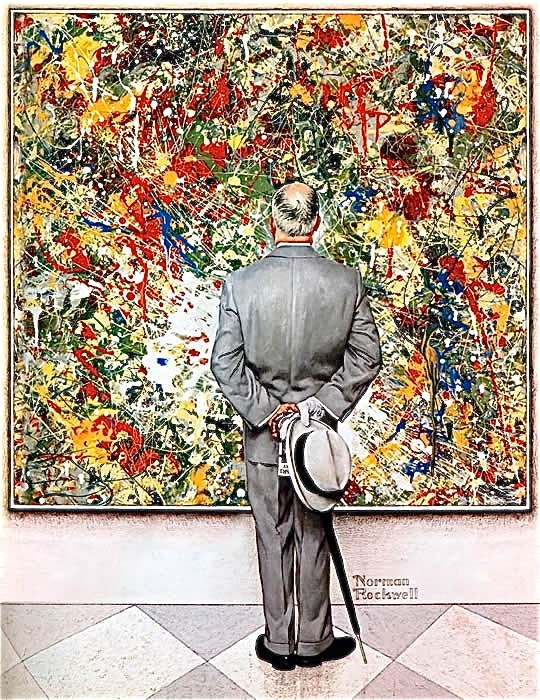
“You have to have enough time… to let something into your brain… so that you realize that you have to have it. I was waiting at a gallery while you talked to the owner and walking around and had seen a wonderful little painted tile of a little boy, but I had to circle around several times before I realized I had to take him home with me. I probably would never have bought it except I had the time, with no distractions, to fall in love with him.”
We agreed that after the first purchase, a collector has begun to train his sensitivities to not just walking past art, but engaging with it… even acquiring it.
I think that is why so much art is sold in tourism centers like Taos or Santa Fe or Carmel or New Orleans. People go there for entertainment and food and to be exposed to a semi-exotic atmosphere, and in the process aimlessly walk around and begin to kill time in unfamiliar places, even art galleries, and find a painting in a gallery which becomes the perfect relic of their golden moment to take back home.
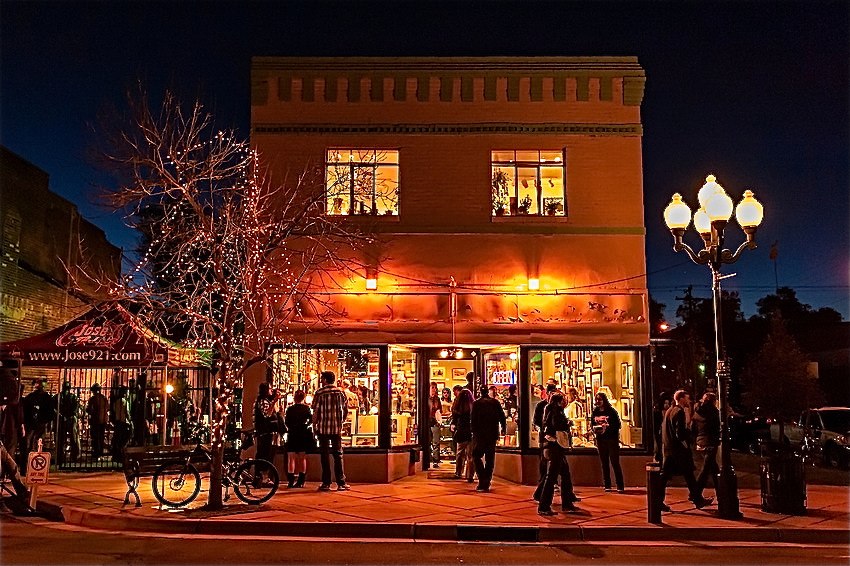
So… leisure time, travel, serenity, all help the art transaction process. People are less likely to find and fall in love with a painting for their home in a downtown intersection or a WalMart parking lot. It might be that they will have an encounter with art at a hospital waiting room or a restaurant. But just give them a tiny vision of an escape, and anything can happen.

My best example of this is the old, now defunct, Hempstead Art League. They met in an old rock hut near the Waller County Courthouse. Every spring they would have art sales on the grounds of their art hut. This was before the big bypass was built and nearly wiped out the whole town. Every mother’s son headed to Austin, every couple out for a weekend drive in the country to see the bluebonnets, every poor unsuspecting motorist who went down HWY 290 had to go through Hempstead and wait at the red light to go to parts beyond. Sometimes that light would have cars backed up all the way to DiIrios Fruit stand… a good mile back towards Houston.
People would sit in their cars and wait as much as a half-hour for their turn to turn right, and quietly stare at the sweet little old ladies sitting in the shade of the oak trees and sipping iced tea, and conversing with other unsuspecting motorists who had gotten bored… and pulled over. Suddenly people were pouring out of their cars and enjoying themselves…
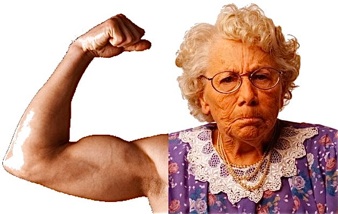
This is not an ideal tourist moment, but nevertheless, these little old ladies were selling $15,000 to $25,000 worth of art, or sometimes even more, over the few weekends in April when they did this. And they did this for years, until the bypass killed the fortuitous art-market traffic jam. I used to tell them, as a professional who had been a part of many shows and one who had promoted a few on my own, I had never seen the kind of success they had at a bottleneck intersection in a backwater town. They did very little but set up and start taking money. Artists from all over the Houston area clamored to show at their little yard sale. Their membership list ballooned as the word got out. Everybody loves a winner. But nobody seemed to take note of what makes a winner.
Certainly location had a lot to do with it. But the extended time which was forced on those driving by served to force the unsuspecting art buyers to take a second look. And the money flowed. I always imagined a funny cartoon where the innocent-looking little old ladies drew straws to see who would spread nails in the road to make flat tires to cause traffic congestion whenever sales declined. My Far Side styled humor kept me chuckling, but their annual art sale was no joke.
Time-travel-serenity. In this case getting out of the car, stepping into Texas small town charm, southern hospitality, iced tea… and some lovely Texas landscapes was all the serenity this event needed to be successful.
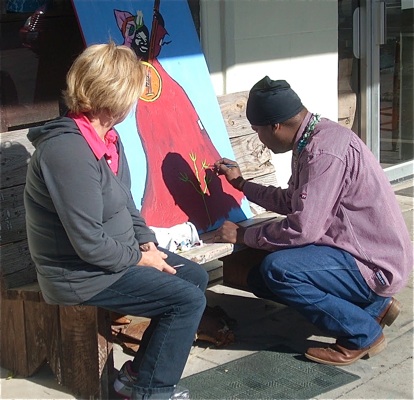
In recent years we have witnessed firsthand the mercurial career of Leon Collins and his daughter Molly Bee here in Navasota. It’s the same deal, but an improved model. The traffic is stopped twenty times a day, every day, 52 weeks out of the year, by long, boring trains. Leon has usually set up his works several blocks from the tracks, where people can get bored and pull over. Leon has become a permanent icon over the years on the downtown Navasota landscape, sitting out in front of Tejas Antiques and exhibiting his art. He has sold literally THOUSANDS of paintings. He has had the most successful career in art I have ever seen with no business card, no website, no advertising, not even a real gallery. It’s just access to travelers, who are killing time, forced to consider him, and seduced into the serene, intimate, small town experience of meeting him and making a new friend.
Thousands of folks pass by Leon every day, so that he can snag one or two. There are your odds today even if you have found a sweet spot. And Leon is willing to sit out in one hundred degree heat or freezing drizzle. In fact this seems to add to the ambiance. Sympathy is a great motivator. Harsh weather makes a person determined to get something for their trouble. Leon has taught me a lot about what it takes to be successful. I mean really successful selling your art.
The Hempstead ladies, God rest their souls, taught me a lot as well.
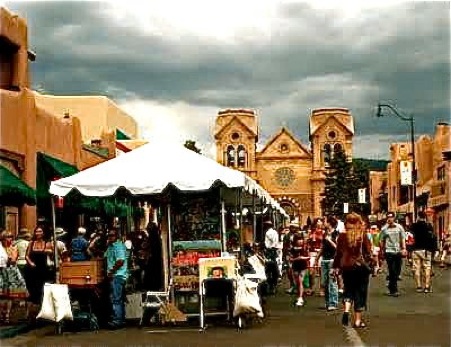
I can’t tell you how many serious art collectors I have visited with, (and stupidly ignored) fully impressed with my work, promising to buy one of mine “someday,” as they asked me with a misty eye if I had I ever been to the Indian Market in Santa Fe… Regardless of their attraction to my art… they wanted THAT kind of experience as they acquired their art… Did I show anywhere in New Mexico?
Artists have to understand these kinds of psychological dynamics to get a shot at the “art collectors”… many of which do not even think of themselves as such, and never intentionally go to an art gallery at home.
To make things tougher, average folks are broke and spend a ton more of their incomes on insurance or taxes than the generations before. Art has taken a backseat to computers, health care, and new cell phones every six months. And most art cannot compete with a cheap video game when it comes to visual and mental stimulation. Art galleries are shutting down everywhere, as they fail to connect with their market. Artists will have to figure out how to make their works relevant for the average consumer, and how to find them in today’s maze of retail distractions.
I think it will start at a quiet, attractive place… where people, for whatever reasons, have stopped the merry-go-round and gotten off. It takes a little time and ingenuity, or for us simple-minded souls, perhaps a geographical obstacle to sell a person art. So you better go find your tourist trap and pick your spot!
enough





